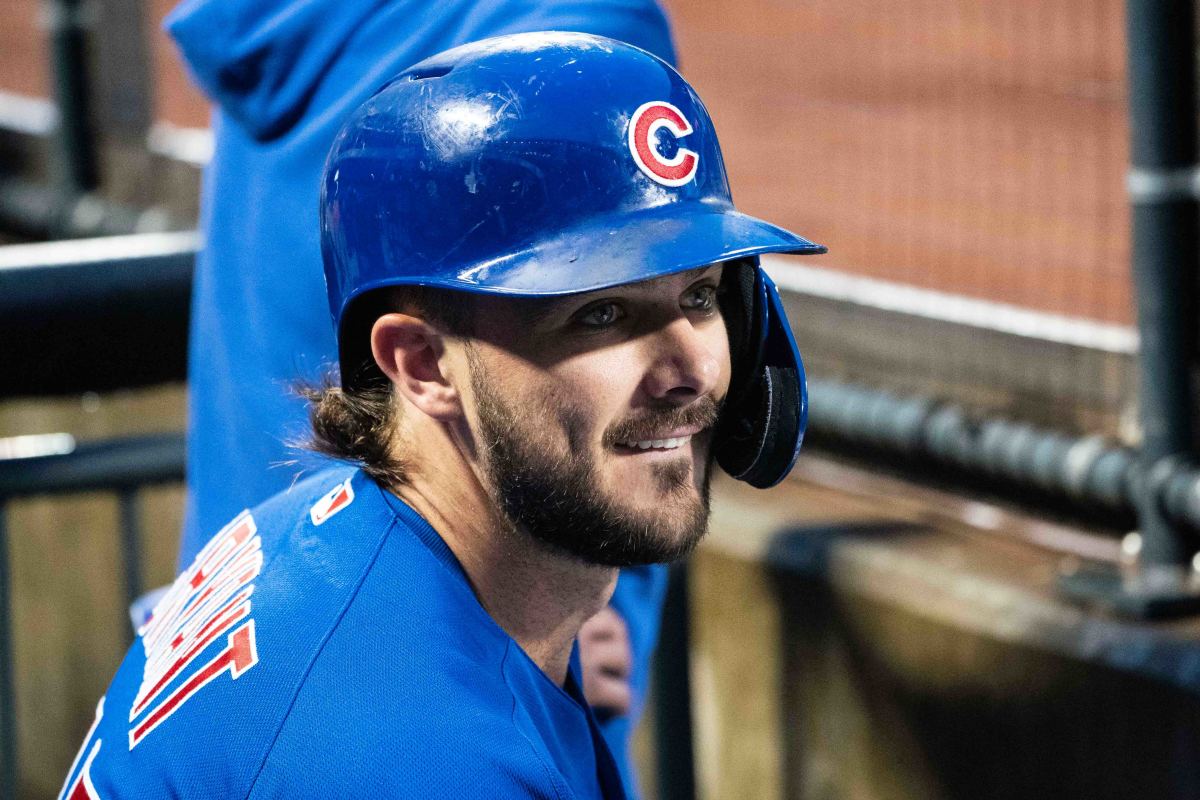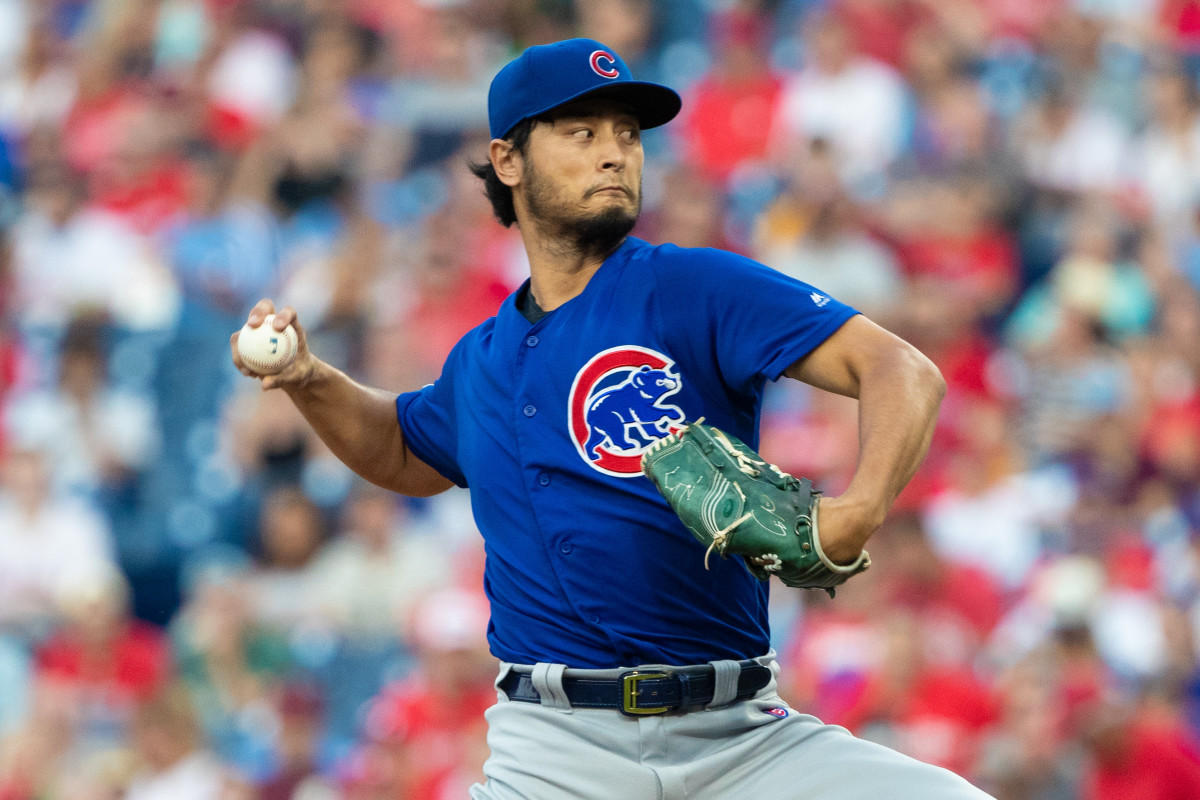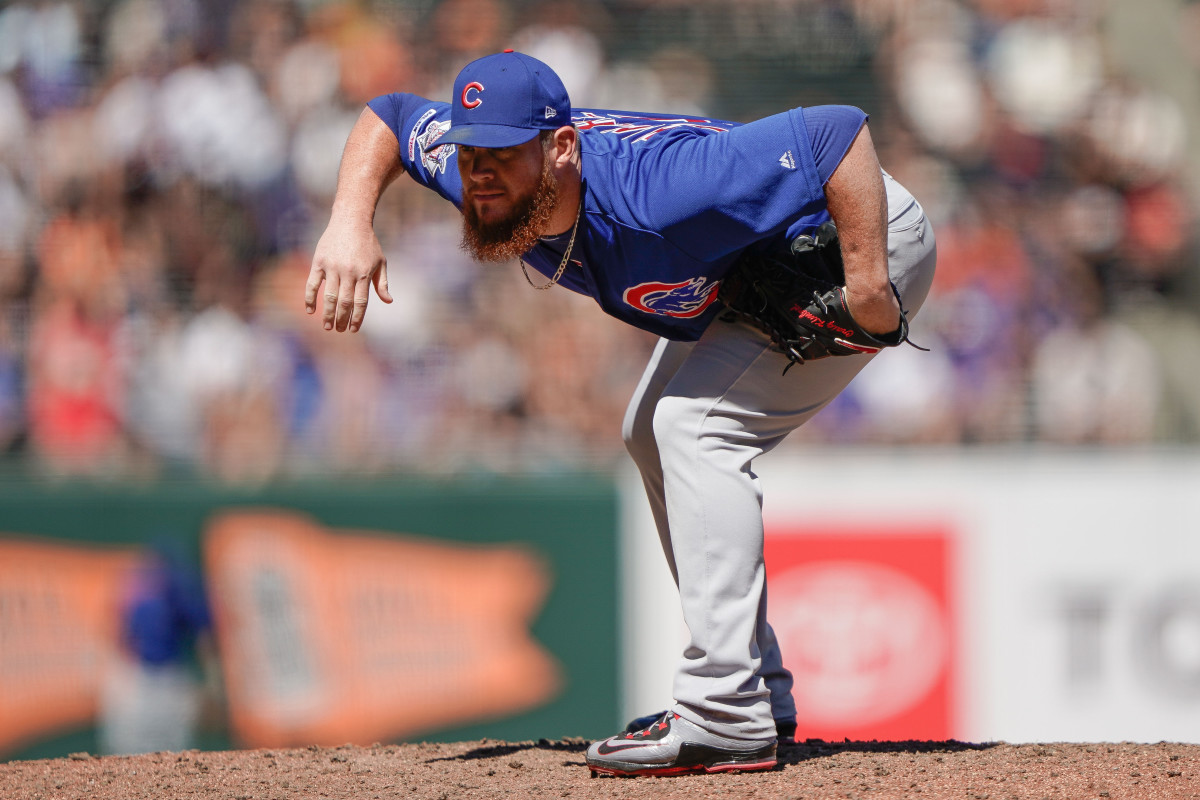2020 Fantasy Baseball: Chicago Cubs Team Preview

Chicago Cubs
The Cubs four-year playoff run ended in 2019 with an 84-78 record. They made the playoffs eight times over the past 23 seasons with one World Series win. Over the team's 144-year history, Chicago has 20 postseason appearances with three World Series titles (1907, 1908, and 2016). The Cubs had a streak of eight straight losses in the World Series from 1910 to 1945.
Last year their pitching staff fell to seventh in ERA (4.10) with 38 saves. They struggled in the WHIP department (1.325 – 15th). The Cubs ranked 10th in runs (814), sixth in home runs (256), and 10th in RBI (783).
Chicago enters 2020 with the same structure in their starting lineup. They added IF Hernan Perez and OF Steven Souza to the bench via free agency. The only addition to the pitching staff came from the signing of RP Jeremy Jeffress and a minor deal for RP Casey Sadler. The top two players landing minor league deals were SP Jharel Cotton and C Josh Phegley.
Their most significant loss in the offseason was manager Joe Maddon who took a job with the Angels. The Cubs brought in David Ross to run the team after a long career in the majors as a backup catcher.
Chicago should have a competitive offense with a bounce-back in their bullpen. Their success in 2020 falls on their aging starting rotation, which may be out of winning bullets. The Cubs almost look to be in sell mode with the hopes of rebooting the franchise.
Starting Lineup

1. OF Ian Happ
Behind door number one, a fantasy owner will see Happ’s success over 140 at-bats in the majors (.264 with 25 runs, 11 HRs, 30 RBI, and two SBs). These stats projected over 550 at-bats would come to 98 runs, 43 home runs, 118 RBI, and eight stolen bases. He did have an improvement in his strikeout rate (25.0) with Chicago (33.8 over his first 875 plate appearances in the majors) with a viable walk rate (9.6).
Behind door number two, Happ hit .255 at AAA with 87 runs, 25 home runs, 78 RBI, and 11 steals over 463 at-bats. His strikeout rate at AAA came in at 25.7 percent (23.9 in his minor league career). His best play last year came in September (.311 with six HRs and 17 RBI) over short at-bats (61). Happ has had a high HR/FB rate (22.6 – 26.2 in 2019) in his limited time in the majors.
An interesting player as he does a lot of good things when in the lineup. His batting average does have plenty of risk if his approach has any regression, and his sample size is small. Right kind of flier based on his ADP (360) for many team structures. Happ should be in the hunt for everyday at-bats with a reasonable chance at batting leadoff when he’s playing well. Think .240 with a floor of 25/15 with 450 at-bats.

2. 3B Kris Bryant
Last year Bryant had a price point around the 30th pick in the high-stakes market. He finished with value in runs (108) and home runs (31) with about league average stats in batting average (.282) and RBI (77), but his ADP slipped to 58 in the early draft season. His CTBA (.384) has been in a tight range over the past four seasons while owning strength in his average hit rate (1.850). He tends to get low RBI chances (330 in 2019, 281 in 2018, and 379 in 2017), but Bryant has been a poor player of late with runners on base (RBI rate of 14 or less) from 2017 to 2019. He continues to take walks (11.7 percent) while trailing the league average (21.5) in his strikeout rate (22.9). His best play comes against left-handed pitching (.295 with nine HRs and 20 RBI over 105 at-bats).
Bryant produced at a high level in May (.333 with 25 runs, ten HRs, and 22 RBI over 96 at-bats), while losing impact value over the final four months (.282 with 65 runs, 18 HRs, and 42 RBI over 347 at-bats). His hard-hit rate (34.1) fell to 298th after grading 133rd in 2016 (39 home runs). Bryant missed the final week of the year with a right ankle issue while playing with a minor right knee injury over the last two months. His 2018 season ended with a left shoulder injury that never required surgery. He has a rising fly-ball rate (43.2) with a rebound in his HR/FB rate (18.0).
With five seasons on his major league resume, Bryant has underachieved his expected upside in power while failing too many times with runners on base and losing his initial value in speed. I've seen a lot worse player pop in home runs over the last couple of years, so I'd keep an open mind on his ceiling. For now, his floor looks to be a .280 hitter with a 100/30/75/5 skill set. With harder contact and a better mindset with runners on base, Bryant could push toward a 40/120 season.


3. 1B Anthony Rizzo
Over the previous two seasons, Rizzo lost his value in power (25 and 27 home runs), especially when compared to the rise in home runs in baseball. His AVH fell in a tight range from 2015 to 2017 (1.840, 1.865, and 1.872) while having a slight rebound last year (1.773). His RBI rate (19) remains elite, but the Cubs gave away some of that edge by moving him to the leadoff spot for 12 games in 2019 (.410 with three HRs and nine RBI over 39 at-bats). Rizzo saw his CTBA (.352) move to a stronger area while maintaining a top approach (strikeout rate – 14.0 and walk rate – 11.6). He hit better against righties (.307 with 21 HRs and 64 RBI over 388 at-bats).
His production (32 runs, eight HRs, and 36 RBI over 238 at-bats) fell off the table after the All-Star break despite a push in batting average (.327). Rizzo looked to be on an impact season in runs (57), home runs (19), and RBI (58) over the first half of the year. His hard-hit rate (38.7) ranked 104th. Rizzo had a weaker swing path in 2019, which led to a career-low in his fly-ball rate (31.9). He did set a career-best in his HR/FB rate (19.9).
Competitive piece to a fantasy team with a fading ADP (65). The theme here is that the Cubs’ bats will be discounted in 2020. Rizzo has a 90/30/100 resume with a neutral batting average and some help in steals. He needs to hit more fly balls, plus the bats in the starting lineup need to play well. Excellent value for a team with an early draft position.

4. SS Javier Baez
After a breakthrough season in 2018, Baez underperformed his draft position last year due to a broken left thumb in early September. He also battled a heel issue in May. His strikeout rate (27.8) remains a liability with no sign of improvement in his walk rate (5.0). Baez started the year with success in April (.302 with 23 runs, nine HRs, and 22 RBI over 116 at-bats) with plenty of power in June (seven HRs and 22 RBI). After the All-Star break, he hit .263 with seven home runs and 23 RBI over 175 at-bats while only seeing the field for four at-bats in September.
Baez plays well against left-handed pitching (.304 with eight HRs, 17 RBI, and eight SBs over 102 at-bats). He finished 83rd in hard-hit rate (43.6) while almost repeating his HR/FB rate (24.4). His ground ball rate (50.3) was career-high while trending downward for the third straight year in his fly-ball rate (31.6 – 34.6 in his career). Baez hits for a high contact batting average (.397) with strength in his RBI rate (17) and AVH (1.893). Pretty much a free swinger who needs to change his swing path to push toward 40 home runs. His batting average downside is offset by his ability to hit for a high average when putting the ball in play.
Viable 100/30/100/20 player with a neutral batting average. His RBI chances in 2019 (335) came in 114 lower than 2018 (449). Baez has an ADP of 41 in the early draft season.

5. C Willson Contreras
Last year my plan was to drafted Contreras in the ninth round on all of my teams in 15 leagues in the high stake’s market. He made it to me every time, but each time I choose a player who appeared to be a value, while gambling, he'd make it back for my next pick. I had minimal exposure to him. He played well despite missing about five weeks of the year with a foot issue and a hamstring injury. Contreras played great over his first 78 games (.286 with 43 runs, 19 HRs, and 55 RBI over 262 at-bats).
After just about no stats for six weeks (6-for-33 with two runs and two RBI), he chipped in a decent September (12 runs, five HRs, and seven RBI) while receiving limited at-bats (65). His walk rate (9.3) remains favorable while having regression in his strikeout rate (24.9). Contreras played better against left-handed pitching (.320 with six HRs and 14 RBI over 75 at-bats). His hard-hit rate (41.5) showed growth. He set career-high in his HR/FB rate (27.3) while offering strength in each year in the majors (2016 – 23.5, 2017 – 25.9) except 2018 (9.3). His lack of further upside in power comes from a massive ground ball rate (50.2 – 52.3 in his career).
On the positive side, Contreras has a rising fly-ball rate (34.0 – 30.6 in his career). Both his CTBA (.380) and AVH (1.959) project well going forward. His ADP (120) makes a lot of sense based on the value of the catching pool in 2020. Next step: .280 with 75 runs, 30 home runs, and 80 RBI if given 500 at-bats.
To view the full starting lineup, which also includes player analysis for Kyle Schwarber, Jason Heyward, David Bote, Nico Hoerner, Steve Souza, Albert Almora, Victor Caratini, Daniel Descalso and Hernan Perez, subscribe now to FullTime Fantasy.
Use coupon code EDGE25 to receive 25% off your monthly season-long subscription. Shawn Childs is a 5-time high-stakes fantasy baseball national champ. Gain a cash-winning edge with FullTime Fantasy.
READ MORE: 2020 Chicago Cubs Team Outlook

Pitching Staff

SP1 Yu Darvish
Darvish regained his form in 2019 after being erratic over his first 17 starts (4.98 ERA) due to a high walk rate (4.9) and a battle with the long ball (1.8 per nine). Even with success over the final three months (2.95 ERA, 0.826 WHIP, and 124 Ks over 88.1 innings), he did still allow four runs or more runs in five of his 14 starts while barely improving on his HR/9 rate (1.5). The difference of the two halves was only two innings, but Darvish issued only seven walks over his final 88.1 innings compared to 49 walks over 90.1 innings to start the year.
Wins (6) were a problem all year highlighted by a 13-game stretch with no victories. His worse side vs. batters came against lefties (.243 with 19 HRs over 342 at-bats). He allowed 29 of his 34 home runs on three pitches (four-seam – 13, sinker – 7, and slider – 9). His AVB (94.4) fell into a competitive range for his career resume. Darvish threw his slider (.206 BAA) 45 percent of the time, followed by his four-seamer (.280 BAA). He mixed three other pitches of value (split-finger – .094, curveball – .125 BAA, and changeup – .130 BAA) while his sinker (.296 BAA) and cutter (.313 BAA) came up short of expectations. His HR/FB rate (22.8) was insane, but Darvish did induce more ground balls (45.5 – 41.8 in his career).
With a strong second half, a rebound in his walk rate (2.8), and repeated success in his strikeout rate (11.5), Darvish will be drafted as an SP2 with ADP of 66. The key to a further step forward is the success and value of his fastball. He pitched 132 more innings than 2018 while having an up and down career in command. A front runner that pitches better when ahead in the count. Look for a push toward 15 wins with a sub 3.50 ERA and over 250 strikeouts with 32 starts.

SP2 Kyle Hendricks
Hendricks doesn't come with a sexy arm or prominent strikeout ability, but fantasy owners would do well with a six-pack of him on their fantasy roster. Over six years in the majors, he went 63-43 with a 3.14 ERA and 818 strikeouts over 966 innings. His walk rate (1.6) was the lowest of his career while still having weakness in his strikeout rate (7.6). Even with success in ERA (3.44) in 2019, Hendricks still has issues against right-handed batters (.260 with 12 HRs over 358 at-bats). He struggled in April (1-4 with a 5.33 ERA), June (4.42 ERA), and August (5.20 ERA).
Hendricks allow two runs or fewer in 20 of his 30 starts. His AFB (87.3) remains short. Batters had the toughest time with his two lowest usage pitches (four-seam – .167 BAA and curveball – .217 BAA). His changeup (.260 BAA) had a sharp decline in value compared to 2018 (.184 BAA).
Head-shaker arm with the sum of his parts outweighing the weakness in his velocity. More pullback should be expected if he doesn’t regain the feel of his changeup. Closer to a 3.75 ERA for me with a ceiling of 150 strikeouts. Hendricks did miss sometime in June with a minor right shoulder issue. His ADP is 160 in the early draft season.

SP3 Jon Lester
Last year Lester had the worst season of his career with a full year of starts. He managed to pick up 13 wins while leading the National League in hits allowed (205) and posting an unrecoverable WHIP (1.497). His strikeout rate (8.7) and walk rate (2.7) fell in line with his career resume (8.4 and 2.7) while improving on both stats from 2018 (7.4 and 3.2). Lester started the year with a 1.16 ERA, 1.112 WHIP, and 39 strikeouts over 38.2 innings. He blew over his next six games (7.59 ERA, 1.625 WHIP, and nine HRs over 32 innings).
After teasing again over seven more starts (2.91 ERA, 1.293 WHIP, and 41 Ks over 43.1), Lester busted out the shovel to bury fantasy teams over his final 11 games (6.09 ERA, 1.838 WHIP, and 55 Ks). He had no answer for left-handed batters (.319) while righties beat him for 22 of his 26 home runs over 535 at-bats. His AFB (90.9) was a career-low with three straight seasons of regression. Lester only had success with his curveball (.229 BAA). He sure looks like a dying arm with some quit in him in 2019, when the disaster mounted.
The ball is in your court with Lester. His ADP (434) is free while owning a long resume of success (190-108 with a 3.56 ERA and 2,355 Ks over 2,537.2 innings).


CL/RP Craig Kimbrel
Last year was a lost season for Kimbrel. He sat out the first two months of the seasons, trying to get a new contract. The Cubs signed him to a $43 million three-year deal on June 5th. He came to Chicago, not in game shape, which led to three weeks at AAA (one run over 3.2 innings with four Ks). Kimbrel struggled in two of his first three games with the Cubs (five runs and seven baserunners over 2.2 innings) before settling down over his next 17 games (2.30 ERA, 22 Ks, and 12 SVs over 15.2 innings). He missed about two weeks in August with a right knee injury, which was followed up by a right elbow issue in September.
Over his final three games, Kimbrel didn't look healthy (six runs, seven baserunners, and four home runs over 2.1 innings). His AFB (96.4) was more than two MPH lower than 2017 with no success (four-seam – .326 with six HRs over 46 at-bats). He still has a plus curveball (.156 BAA). Over his last three full seasons with Boston, Kimbrel went 12-7 with a 2.44 ERA and 305 strikeouts over 184.1 innings while converting 108 of 119 saves. With a full season to get healthy, he should come back in a big way in 2020. His downside of late comes from his high walk rate (5.1 in 2016, 1.8 in 2017, 4.5 in 2018, and 5.2 in 2019).
His elbow issue is a slight concern, but favoring his right leg due to an injury may have caused the problem. My kind of gamble at closer this year based on his ADP (141). Look for a sub 2.50 ERA and over 40 saves and a chance at 100 strikeouts if he pitched over 65 innings.
To view the full pitching staff, which also includes player analysis for Jose Quintana, Tyler Chatwood, Adbert Alzolay, Jharel Cotton, Rowan Wick and Jeremy Jeffress, subscribe now to FullTime Fantasy.
Use coupon code EDGE25 to receive 25% off your monthly season-long subscription. Shawn Childs is a 5-time high-stakes fantasy baseball national champ. Gain a cash-winning edge with FullTime Fantasy.
READ MORE: 2020 Chicago Cubs Team Outlook
